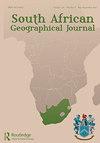Rural community dependency on woodland resources: the case of Foley and Makomoto settlements in Central-East Botswana
IF 1.1
4区 社会学
Q3 GEOGRAPHY
引用次数: 0
Abstract
ABSTRACT The unsustainable exploitation of savanna woodland resources in Botswana threatens the capabilities of the ecosystem to provide goods and services that are vital to rural household livelihoods, hence affecting the ecosystem sustainability and rural livelihoods. Therefore, this study documented the levels of rural households’ dependence on and socio-economic factors contributing to woodland resource dependency in Foley and Makomoto localities. Data was obtained in 92 sampled households using semi-structured questionnaires. The probit model was used to predict factors contributing to woodland resource dependency. Results established that rural household adapted various portfolios of livelihood activities which contribute to household income. Furthermore, woodland resources have a great significance to rural households’ well-being. The results show that the income derived from the woodland resources constitutes 58% in Makomoto and 43% in Foley of the total household income. The econometric results revealed that education, place of residence, non-agricultural income and household size significantly influenced the dependence on woodland resources . Woodland dependency decreased with educational level and non-agricultural income. Hence, a need to promote education and non-farming enterprises in rural communities. To combat unsustainable exploitation of the woodland resources, this study recommends the introduction of a community monitoring tool to rural communities.农村社区对林地资源的依赖:博茨瓦纳中东部Foley和Makomoto定居点的案例
本文章由计算机程序翻译,如有差异,请以英文原文为准。
求助全文
约1分钟内获得全文
求助全文
来源期刊

South African Geographical Journal
GEOGRAPHY-
CiteScore
3.40
自引率
7.10%
发文量
25
期刊介绍:
The South African Geographical Journal was founded in 1917 and is the flagship journal of the Society of South African Geographers. The journal aims at using southern Africa as a region from, and through, which to communicate geographic knowledge and to engage with issues and themes relevant to the discipline. The journal is a forum for papers of a high academic quality and welcomes papers dealing with philosophical and methodological issues and topics of an international scope that are significant for the region and the African continent, including: Climate change Environmental studies Development Governance and policy Physical and urban Geography Human Geography Sustainability Tourism GIS and remote sensing
 求助内容:
求助内容: 应助结果提醒方式:
应助结果提醒方式:


